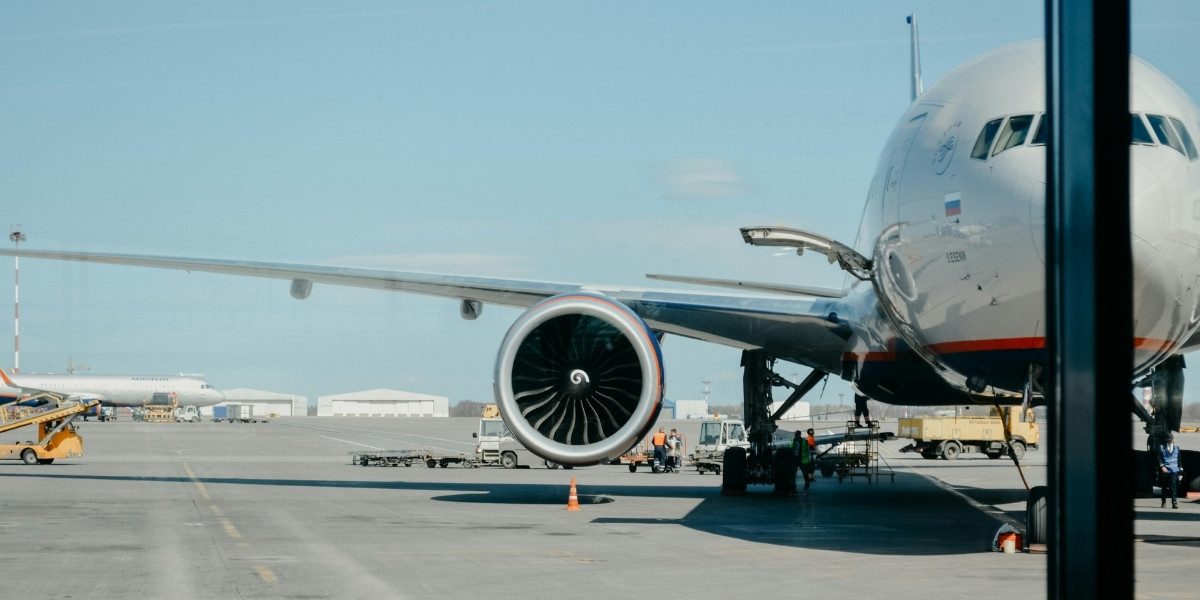Navigating the United States Aviation Landscape: A Comprehensive Guide to Airports
The United States boasts one of the largest and most complex aviation networks in the world. With thousands of airports spread across the country, air travel plays an essential role in connecting cities, states, and regions. Whether you’re a frequent flyer or a first-time traveler, understanding the U.S. aviation landscape is key to ensuring a smooth journey from takeoff to landing.
In this comprehensive guide, we will explore the major airports in the United States, the factors that influence their operations, tips for navigating busy terminals, and what to expect at both large international hubs and smaller regional airports. Whether you’re flying for business, leisure, or connecting to other destinations, this guide will provide useful insights to make your airport experience more efficient and enjoyable.
Read Also: The Electric Vehicle Revolution: How EVs Are Changing the American Road
The United States Aviation Landscape: Key Facts
Before diving into the details of specific airports, it’s important to understand the structure and significance of U.S. airports as a whole. Here are a few key facts about the aviation landscape in the United States:
1. Thousands of Airports
The United States has over 13,000 airports, ranging from major international hubs to small regional and private airports. This extensive network allows for flexible travel options across the country and beyond.
2. Air Traffic Control System
The U.S. air traffic control system, managed by the Federal Aviation Administration (FAA), ensures the safety and efficiency of air traffic operations. Airports of varying sizes are integrated into this system, coordinating flights for both domestic and international routes.
3. Domestic and International Hubs
While some airports focus primarily on domestic flights, others serve as major international gateways connecting the U.S. to global destinations. International hubs typically have customs and immigration facilities to handle arrivals from abroad.
4. Passenger Volume
The U.S. has several airports that rank among the busiest in the world, handling millions of passengers every year. These high-traffic airports are equipped with extensive amenities and infrastructure to accommodate the large number of travelers.
Major Airports in the United States: A Snapshot
Whether you’re flying from a bustling metropolis or a quieter regional airport, it’s important to know which airports are the major players in the U.S. aviation landscape. Below, we break down some of the most important airports in the country.
1. Hartsfield-Jackson Atlanta International Airport (ATL) – The World’s Busiest Airport
Located in Atlanta, Georgia, Hartsfield-Jackson Atlanta International Airport holds the title of the world’s busiest airport based on passenger traffic. With more than 200 gates and serving as a hub for Delta Air Lines, ATL is an essential connection point for domestic and international flights.
Key Features:
-
Domestic Hub: Hartsfield-Jackson is a major hub for flights within the United States, with direct flights to virtually every corner of the country.
-
International Flights: ATL also offers extensive international connections to Europe, Asia, Africa, and the Americas.
-
Amenities: The airport has an abundance of shops, restaurants, and services, including a kids’ zone, luxury lounges, and free Wi-Fi.
Tips for Navigating ATL:
-
Prepare for Security: With such a high volume of passengers, security lines can be long, so plan accordingly.
-
Terminal Layout: ATL has two terminals—Domestic (Terminal South) and International (Terminal North). Make sure to check your gate and terminal in advance.
2. Los Angeles International Airport (LAX) – A Global Gateway
Los Angeles International Airport is the primary international gateway for travelers flying to and from the West Coast. As one of the busiest airports in the U.S., LAX is known for its extensive connections to both domestic and international destinations.
Key Features:
-
Global Connectivity: LAX offers direct flights to numerous destinations across Asia, Europe, South America, and Oceania.
-
Multiple Terminals: The airport has nine terminals, with airlines like American Airlines, Delta, and United operating from separate terminals.
-
Cultural Attractions: Located in Los Angeles, passengers can easily access popular attractions like Hollywood, Santa Monica Beach, and the Getty Center.
Tips for Navigating LAX:
-
Use LAX’s New FlyAway Shuttle: This service offers a direct and cost-effective way to travel between the airport and major areas in Los Angeles.
-
Plan for Traffic: LAX is located near the 405 Freeway, which can get congested, so allow extra time for airport transfers.
3. Chicago O’Hare International Airport (ORD) – A Hub for Midwestern Travel
As one of the busiest airports in the United States, Chicago O’Hare International Airport connects travelers to nearly every part of the world. Located in Illinois, O’Hare serves as a major hub for both United Airlines and American Airlines.
Key Features:
-
Domestic and International Reach: O’Hare is a significant player for both domestic flights within the U.S. and international connections, particularly to Europe and Asia.
-
Transit Connectivity: The airport is well-connected to downtown Chicago by the CTA Blue Line, providing passengers with quick access to the city.
-
Terminal Amenities: O’Hare has a variety of services, including dining options, lounges, and shopping.
Tips for Navigating ORD:
-
Consider TSA PreCheck: Given the large number of passengers, using TSA PreCheck can save time by avoiding long lines at security.
-
Gate Information: O’Hare has multiple terminals and gates, so it’s essential to confirm your departure gate before heading to security.
4. John F. Kennedy International Airport (JFK) – New York’s International Hub
Located in Queens, New York, JFK International Airport serves as the primary gateway for international travel to and from New York City. JFK handles a significant portion of the city’s international flights, making it a key airport for global travel.
Key Features:
-
International Focus: JFK offers direct flights to Europe, Africa, Asia, and Latin America, making it a popular choice for travelers from all over the globe.
-
Airlines: Major international carriers such as American Airlines, Delta, and British Airways operate from JFK.
-
Airport Services: JFK offers ample shopping, dining, and lounge options to cater to both domestic and international travelers.
Tips for Navigating JFK:
-
Get Familiar with Terminals: JFK has six terminals, so it’s important to confirm which one your flight departs from in advance.
-
Plan Extra Time for International Security: International flights may require longer security and customs processing times, so be sure to arrive well in advance.
5. San Francisco International Airport (SFO) – Gateway to the Pacific
Located in San Mateo County, California, San Francisco International Airport serves as a critical hub for travel between the U.S. and Asia-Pacific regions. Known for its modern facilities and eco-friendly initiatives, SFO is one of the most eco-conscious airports in the U.S.
Key Features:
-
Transpacific Connections: SFO offers direct flights to major cities in Asia, Australia, and the Pacific Islands.
-
Technology-Friendly: SFO features various tech-driven services such as free Wi-Fi, mobile apps for flight tracking, and charging stations throughout the airport.
-
Sustainability: The airport is committed to sustainability, with efforts such as energy-efficient buildings and waste reduction programs.
Tips for Navigating SFO:
-
Look for the Terminal Map: SFO has four terminals, so be sure to familiarize yourself with the terminal layout before you arrive.
-
Check Out the International Terminal: If you’re flying internationally, SFO’s International Terminal is designed with comfort in mind, offering shopping, dining, and seating areas.
Tips for Navigating U.S. Airports
While the larger international airports are equipped with extensive services, it’s always helpful to be prepared for your travel experience. Here are some tips for navigating airports across the United States:
1. Use Mobile Apps
Most airports have mobile apps that provide real-time information on gate changes, security wait times, and amenities. Download the app for your specific airport to make your experience smoother.
2. Arrive Early
Larger airports can have long security lines, so it’s always best to arrive 2-3 hours before your flight’s departure time, especially if you are traveling internationally.
3. Know Security Procedures
Be prepared for TSA procedures by having your ID and boarding pass ready, as well as following the 3-1-1 rule for liquids. If you travel frequently, consider enrolling in TSA PreCheck or Clear to expedite your security process.
4. Stay Hydrated and Rested
Airports can be long and tiring, so be sure to drink water, have snacks, and take breaks during long layovers or waits.
Read Also: Understanding U.S. Time Zones: A Comprehensive Guide to Time in the United States
Navigating U.S. Airports with Ease
The U.S. aviation landscape is vast and diverse, with a wide range of airports serving travelers across the country and beyond. Whether you’re flying through major hubs like Atlanta, Los Angeles, or Chicago, or embarking on a smaller regional route, understanding airport services, amenities, and navigation tips will help ensure your journey is as smooth as possible. With proper planning, you can minimize stress and maximize your enjoyment while traveling through the country’s vast and dynamic airport system.








